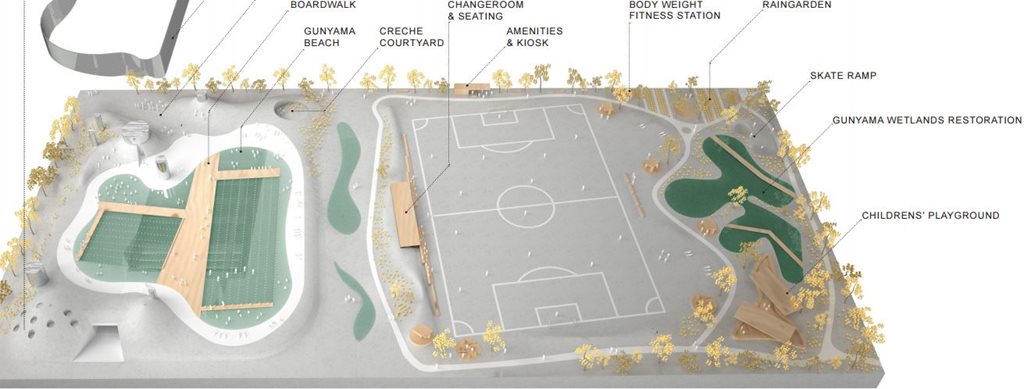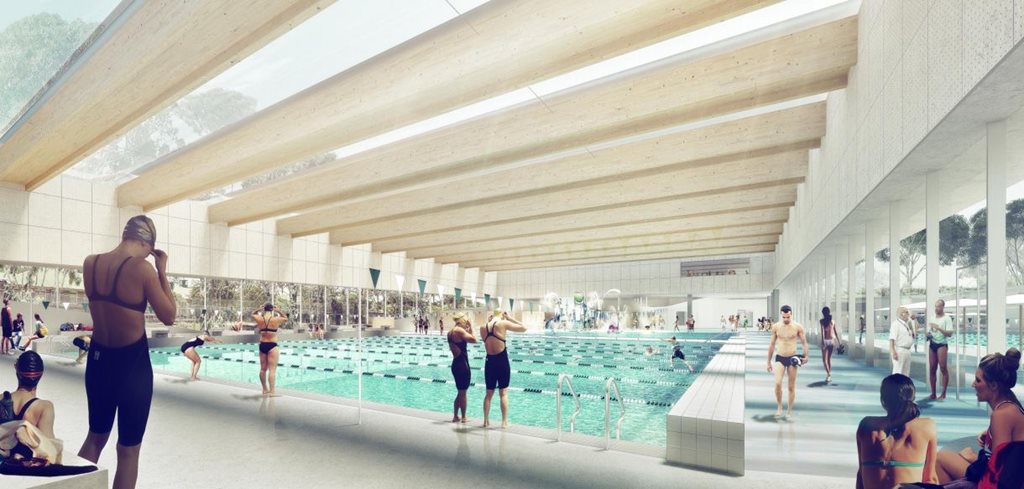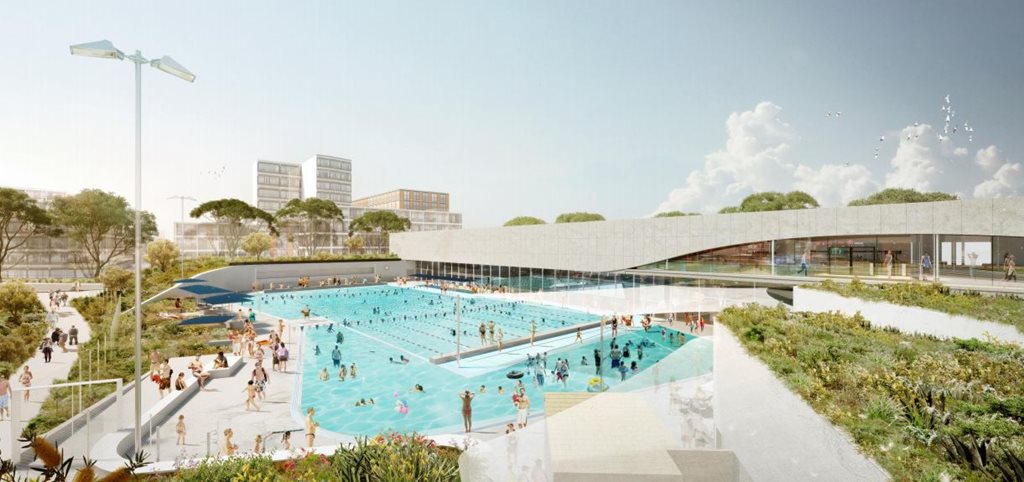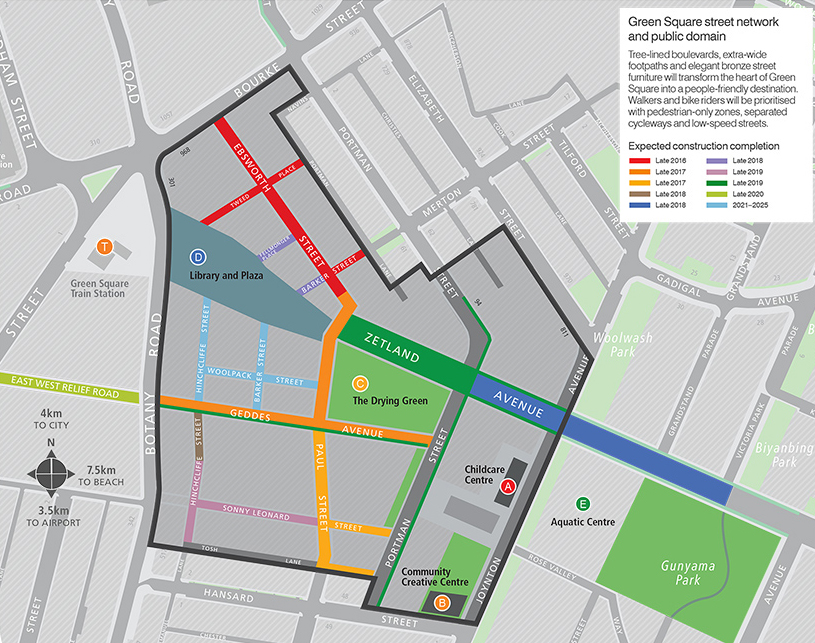The largest aquatic centre to be built in Sydney since the 2000 Olympics will strive for the most ambitious sustainability target ever set for the type of facility.
Andrew Burges Architects, in conjunction with Grimshaw Architects and Taylor Cullity Lethlean Landscape Architecture (TCL), is at the head of the development which proposes to repurpose an underused industrial site in Zetland into an aquatic and recreation centre and a public park.
Specifically, Gunyama Park Aquatic and Recreation Centre (GPARC) will incorporate a 7,000sqm aquatic and fitness centre with three pools and fitness facilities, and an adjacent 16,500sqm park consisting of a synthetic sports field, playground, skate areas, fitness stations, amenities buildings, BBQ areas and landscaping.
 Andrew Burges initial site model won a design competition back in 2014 and is inspired by Sydney beaches
Andrew Burges initial site model won a design competition back in 2014 and is inspired by Sydney beaches
The designers are targeting an ambitious 5 star Design and As-built Green Star rating for the project and will call on a mixture of ‘green bling’, passive design, and waste and water management strategies to help get them there. On the tech side of things, the designers will use a combination of rooftop photovoltaic panels and natural gas fuel cogeneration system to produce the electricity for the centre and park operations, with the heat by-product of the cogeneration to also be used for tempering the pool water.
Rain gardens will be used to bio-filter collected water for re-use as irrigation and toilet flushing, while a number of earth berms made from excavated material will surround the aquatic and recreation centre to provide insulation and thermal mass to internal spaces.
One of the most striking elements of the project’s architecture, the aquatic centre’s timber and ethylene tetrafluoroethylene (ETFE) roof, will also add to the building’s sustainability rating by reducing the building’s reliance on artificial lighting. The large timber beams will be sourced from certified, sustainably managed sources while the ETFE will feature 65 per cent silver dot (fritted pattern) coverage to provide high-quality light to the pool hall, protected from ultraviolet light and glare.

The internal pool hall is characterised by a light and natural material palette with large span timber beams fixed to concrete walls, clad with perforated CFC panels with acoustic insulation behind. The roof is EFTE pillows spanning between the timber beams, creating a continuous rhythm of daylight and structure through the main internal pool hall.

The upper external façade of the aquatic and recreation centre building is proposed as CFC panels in a natural concrete finish. The design of the lower walls surrounding the pool concourse reinforces the coastal pool palette with the primary wall finish being whitewashed, textured rendered walls in combination with planted berm walls
A PARK FOR A NEW NEIGHBOURHOOD

The Green Square redevelopment precinct. Click to enlarge image.
The GPARC is part of the Green Square redevelopment precinct which will have 10,000 new apartments within four years and is predicted to become the most densely populated area in Sydney by 2030.
The new masterplanned community has been marketed as the new exemplar of sustainable high density city living where apartments will be linked to recycled water, train routes, new shopping centres and entertainment facilities, as well as bike and walking routes and parks and gardens like the GPARC.
At the heart of the Green Square development is the new town centre, a major new residential, retail and cultural hub designed by Stewart Hollenstein, in association with Canberra based Stewart Architecture, which has been hailed by Australian architect and Pritzker Prize recipient Glenn Murcutt as “brilliant”.
A diverse range of Green Square projects are already underway, including a nine storey residential building by MNH Design Union, a sculptural apartment block with ‘a hole in it’ by Koichi Takada, a new child care centre designed by Sydney architecture practice Fox Johnston in collaboration with CHROFI, Peter Stutchbury Architects, and a 6,200sqm park by McGregor+Coxall to be called The Drying Green.
The GPARC has a circa $90 million price tag.
Images: Courtesy of the City of Sydney

